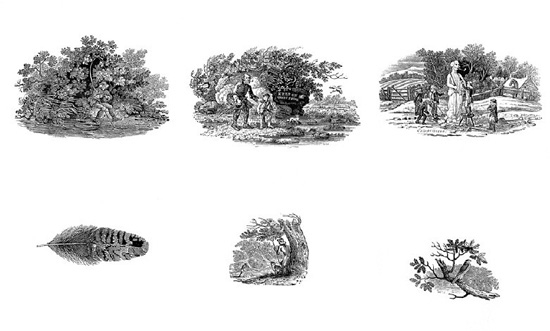|
Introduction of the artist:
Thomas BEWICK (UK)
Born in 1753, Northumberland, England. Died in 1828, Gateshead, England. Wood
engraver and ornithologist.
Introduction of works:

During his lifetime, Thomas Bewick produced thousands of wood engravings.
These included vignettes that he referred to as “Tale-pieces”, amusing images
intended “to illustrate some truth or point of some moral.” They were cut into
blocks of box-wood, an exceptionally close-grained hard wood conducive to a
graphic fineness. The fact that the blocks were sections through lengths of
timber meant that the pictures could not be anything but small, but this
restriction by no means cramped the artist’s style. On the contrary, Bewick
developed a meticulousness whereby the slightest nuances could be conveyed
through the tiny lines he left in relief after engraving.
The Tale-pieces provide invaluable insight into not only the imagination and
wit of the artist but also aspects of contemporary social history, especially
rural life in the early nineteenth century. Clearly Bewick was a sceptical
individual, unimpressed by institutions. One vignette, for example, depicts a
horse stopping on the bank of a river to avoid falling into the water, despite
his rider’s encouragement to go on. In others we see children riding gravestones
as if they were hobby-horses, a donkey rubbing himself against a memorial
erected to celebrate a “splendid (military) victory”, a scarecrow dressed in a
soldier’s uniform and so on; all wonderful observations on all-too-human vanity.
A small landscape obscured by the artist’s engraved thumb-print is radical in
its self-referentiality as well as its implications with respect to the nature
of artistic identity.
| 
